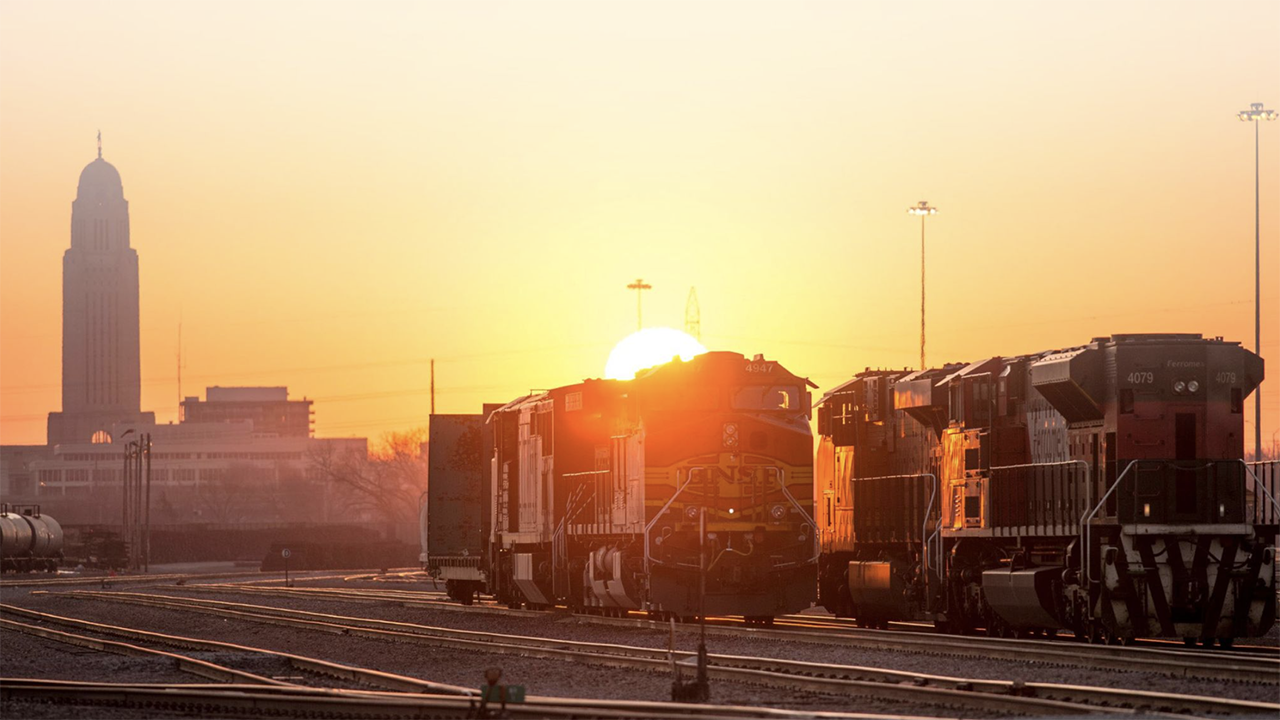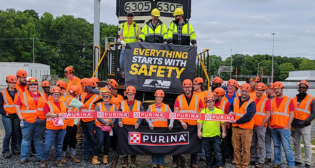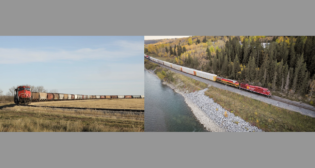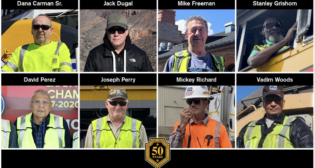
Promises Made, Promises Kept
Written by Nebraska Digital, administrator
(BNSF Photograph)
Since the East Palestine, Ohio, train derailment, America’s freight railroads acted quickly and decisively to pursue voluntary actions to help prevent similar accidents from occurring in the future. Over the past 12 months, the Class I railroads have kept, and in some cases exceeded, their promises, clearly demonstrating the industry’s commitment to lead, innovate, and implement tangible safety solutions without waiting for mandates from Congress or regulators.
Freight rail is and remains a safe, responsible way to move the hazardous materials America requires. While there is still more work to do, the industry continues to prioritize ongoing improvements to safeguard our people and our communities.
Freight Railroads’ Progress on Safety Commitments
- Increase the frequency of hot bearing detectors (HBDs) across key routes. Class I railroads have purchased and installed hundreds of additional HBDs across their key routes, with more to come online in 2024. These HBDs are complemented by additional existing and evolving technologies targeted at effectively identifying bearing defects.
- Establish a new industry standard of stopping and inspecting trains when an HBD reading exceeds 170°F. Effective July 1, 2023, AAR rules lowered the temperature threshold from 200°F to 170°F.
- Review carriers’ current trending analysis programs to develop uniform recommendations for proactively identifying bearings that may become problematic. On Nov. 29, 2023, railroads established a new, industry-wide trending analysis rule, informed by Railinc’s comprehensive analysis of 150 algorithms used by the Class I carriers to pinpoint the most effective algorithm for detecting problematic bearings. Railinc is the industry’s leading technology and data solutions partner.
- Train 20,000 first responders in local communities and 2,000 at the Security and Emergency Response Training Center (SERTC) in Pueblo, Colo. Class I railroads trained about 35,500 first responders in 2023, and SERTC provided specialized training to 1,800 responders. Class I railroads and SERTC have also developed additional online training programs to provide accessible resources to first responders across the nation.
- Double the number of first responders with access to AskRail, which provides real-time information on railcar contents and the safe handling of those materials. Railroads have dramatically exceeded this goal with AskRail information now available to more than 2.3 million first responders across the U.S. and Canada through our work with dispatchers in Emergency Communications Centers (ECCs) and CHEMTREC, an emergency call center for hazmat handling. Railroads have contacted each of the nation’s ECCs about integrating AskRail into their systems; more than 102 are fully onboarded and another 81 are currently in the onboarding process. In addition to expanding the availability of AskRail, this new approach enhances the continuity of access an information and streamlines communications to allow for more efficient response.
- Identify ways to improve the fire performance of tank cars and other service equipment. AAR’s tank car committee issued new recommendations for bottom valve protection requirements to increase safety. This is a voluntary joint initiative between the industry and the hazmat shippers who own the tank cars. The committee continues to explore other engineering solutions capable of safely and reliably addressing this issue.
- Supplement railroads’ existing confidential reporting programs by joining the Federal Railroad Administration’s voluntary C3RS program. Railroads remain committed to joining FRA’s C3RS program and have participated in several FRA Railroad Safety Advisory Committee (RSAC) meetings to find a path forward that prioritizes the safety, confidentiality, transparency and accountability necessary for 3RS to operate properly. While this process has not moved as quickly as we would prefer, railroads remain ready and willing to continue discussion at the FRA-led RSAC to find a resolution.
Railway Safety Act
Railroads and Congress share a common goal: Improve rail safety. Since the introduction of the Railway Safety Act, railroads have been fully committed to working with the Commerce Committee and all members of the Senate to ensure the legislation results in meaningful data-driven safety improvements. When the Commerce Committee advanced the bill in May, railroads were clear about their views on the bill, which had substantially improved but still presented challenges. Since then, railroads have continued conversations to address the five problematic provisions of the bill, including the lack of cost-benefit analysis across the legislation and crew staffing mandates. The industry has provided substantive feedback on changes that would improve safety outcomes, encourage future safety technology advances and avoid negative consequences for the supply chain.
Since the spring Commerce Committee action, sponsors have made no changes to the legislation in an effort to win additional support in the Senate. Railroads will continue good-faith efforts with policymakers to find a path for common-sense legislation that can help prevent an incident like what happened in East Palestine.
Key Data:
Freight rail remains the safest option for transporting hazmat materials over land.
- More than 99.9% of all hazmat moved by rail reaches its destination without a release caused by a train accident.
- Rail hazmat rates fell 78% from 2000 to 2022.
Class I rail carriers privately invest an average of $23 billion annually into rail safety, employee training, infrastructure improvements and technological advancements. Since 2000, these efforts resulted in:
- 48% reduction in mainline accident rates.
- 55% decrease in track-caused accident rates.
- 21% drop in equipment-caused accident rates.



